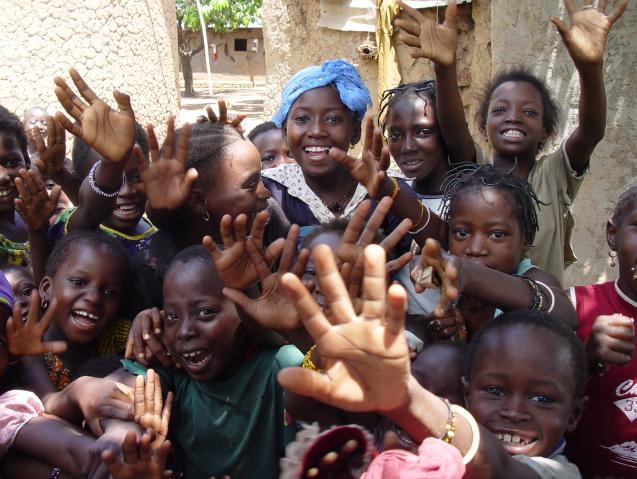Siguiri on:
[Wikipedia]
[Google]
[Amazon]
Siguiri (
N’ko
N'Ko () is a script devised by Solomana Kante in 1949, as a modern writing system for the Mandé languages of West Africa. The term ''N'Ko'', which means ''I say'' in all Mandé languages, is also used for the Mandé literary standard written i ...
: ߛߌ߯ߙߌ߲߫ ; Arabic: سِجِرِ ِ) is a city in northeastern Guinea
Guinea ( ),, fuf, 𞤘𞤭𞤲𞤫, italic=no, Gine, wo, Gine, nqo, ߖߌ߬ߣߍ߫, bm, Gine officially the Republic of Guinea (french: République de Guinée), is a coastal country in West Africa. It borders the Atlantic Ocean to the we ...
on the River Niger. It is a sub-prefecture
A subprefecture is an administrative division of a country that is below prefecture or province.
Albania
There are twelve Albanian counties or prefectures, each of which is divided into several districts, sometimes translated as subprefecture ...
and capital of Siguiri Prefecture
Siguiri is a prefecture located in the Kankan Region of Guinea. The capital is Siguiri. The prefecture covers an area of and has a population of 687,002.
Sub-prefectures
The prefecture is divided administratively into 12 sub-prefectures:
# S ...
in the Kankan Region
The Kankan region now has more than 6,167,904 inhabitants (2021) the most popular region of Guinea The region has five (5) prefectures (Kankan, Kérouané, Kouroussa, Mandiana and Siguiri), 53 sub-prefectures, 5 urban communes, 53 rural commun ...
. Its population was estimated at 28,319 in 2008.
It is known for its goldsmiths and as the birthplace of Sekouba Bambino Diabaté
Sekouba "Bambino" is the stage name of Sekouba Diabaté, a singer and musician born in Guinea, West Africa, in 1964.Placer gold is mined here. North and northwest of Siguiri, and along the
Tinkisso River
The Tinkisso River is a river in Guinea in west Africa. The river is sourced near Dalaba in the Fouta Djallon mountain range, north of Mamou and snakes approximately north-east and then east across the plains of Guinea, until it runs into the Rive ...
, is the Bouré region. This region replaced Bambouk
Bambouk (sometimes Bambuk or Bambuhu) is a traditional name for the territory in eastern Senegal and western Mali, encompassing the Bambouk Mountains on its eastern edge, the valley of the Faleme River and the hilly country to the east of the riv ...
as a major gold producer in the 11th-12th centuries. Gold is also found along the Sankarani River
The Sankarani River is a tributary of the Niger River. Flowing northward from the Guinea Highlands of the Fouta Djallon in Guinea, it crosses into southern Mali, where it joins the Niger approximately upstream of Bamako, the capital of Mali. It ...
.
This is the place where Sundiata Keita
Sundiata Keita ( Mandinka, Malinke: ; 1217 – c. 1255) (also known as Manding Diara, Lion of Mali, Sogolon Djata, son of Sogolon, Nare Maghan and Sogo Sogo Simbon Salaba) was a prince and founder of the Mali Empire. He is also the great-uncle ...
fought Soumaoro Kanté
Soumaoro Kanté (also known as Sumaworo Kanté or Sumanguru Kanté) was a 13th-century king of the Sosso people. Seizing Koumbi Saleh, the capital of the recently defunct Ghana Empire, Soumaoro Kanté proceeded to conquer several neighboring stat ...
, and located here is a former French
French (french: français(e), link=no) may refer to:
* Something of, from, or related to France
** French language, which originated in France, and its various dialects and accents
** French people, a nation and ethnic group identified with Franc ...
fort built in 1888, and the Siguiri Airport
Siguiri Airport is an airport serving Siguiri, a river port in western Guinea. The airport is south of the town and west of the Niger River.
See also
*Transport in Guinea
Transport in Guinea is composed by a variety of systems that people i ...
.
Climate
Siguiri has atropical savanna climate
Tropical savanna climate or tropical wet and dry climate is a tropical climate sub-type that corresponds to the Köppen climate classification categories ''Aw'' (for a dry winter) and ''As'' (for a dry summer). The driest month has less than of p ...
(Köppen climate classification
The Köppen climate classification is one of the most widely used climate classification systems. It was first published by German-Russian climatologist Wladimir Köppen (1846–1940) in 1884, with several later modifications by Köppen, notabl ...
''Aw'').
Birimian

Spinning around the source. Slumbering stories in and around Siguiri.
Article by Rachel Laget based on anthropological field research. (www.xpeditions.eu)
- USAID {{Siguiri Prefecture Communities on the Niger River Sub-prefectures of the Kankan Region
References

External links
Spinning around the source. Slumbering stories in and around Siguiri.
Article by Rachel Laget based on anthropological field research. (www.xpeditions.eu)
- USAID {{Siguiri Prefecture Communities on the Niger River Sub-prefectures of the Kankan Region